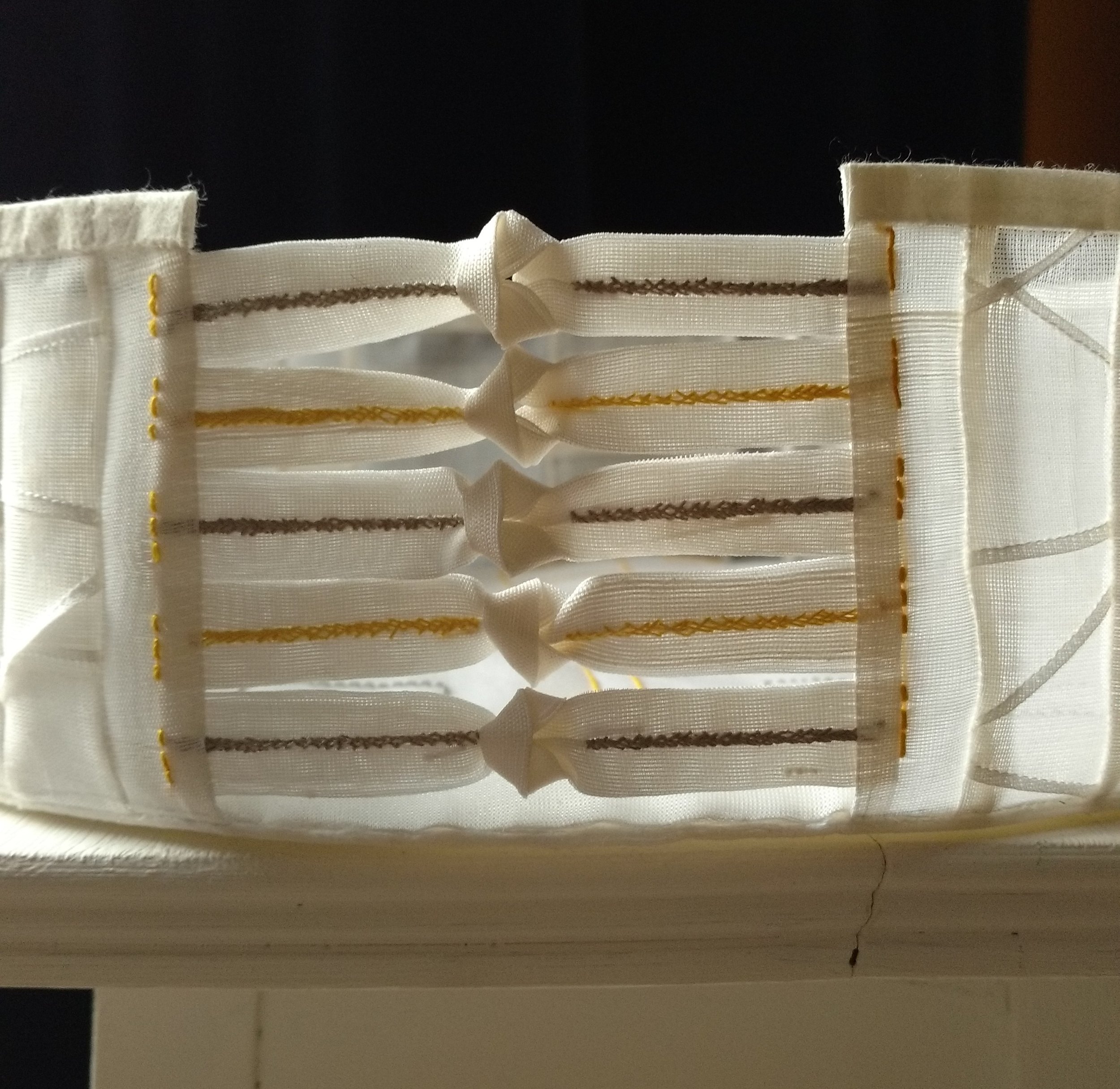Banjitgori -sewing basket
Sewing equipment
A Banjitgori or sewing box was where a woman kept her seven sewing friends: needle, thread, a thimble, a ruler, a pair of scissors, a small iron called an indoo and a large iron with a bowl to carry charcoal called a darimi. These would have been kept in either a basket or a wooden or papier-mâché box and were an essential part of every home.
For hand piecing modern sewers add a rotary cutter and mat, creaser and pins to that list as well.
My banjitgori celebrates both the traditional fabrics and the decorative techniques used in bojagi making. It is pieced from Korean organza and mulberry paper.
The side panels are pieced using the unique seams such as Kkekki (triple stitched seam) This knot embellishment is named after a bird that mates for life. It is used to decorate wedding bojagi as a wish for a long and happy married life for the couple. The KiLeoKi knot is made by looping two strips of medium weight fabric together to form an attractive knot.
Right, saeksil nubi, (corded quilting) is quilting that uses fine strips of hand rolled Hanji, (mulberry paper) held in narrow channels of geometric patterns worked in back stitch with coloured threads on a plain background.. Left, BakGi Mae Dup (bat knots) These intriguing knot like objects are made from small scraps of fabric and can be often be seen on Jokagbo, patchwork bojagi. They appear at the intersection of seams, at the corners or in the centre holding a tab or handle in place. The bat knot symbolises a wish for happiness.


